The Tragedy of the Branch Davidians: Abuse, Control, and the Perils of Charismatic Leadership

Who was David Koresh?
The 1993 Waco siege that ended in the fiery deaths of David Koresh and over 70 of his Branch Davidian followers shocked the world. But upon closer examination, the tactics Koresh used to ensnare and control his followers were not entirely unique. While the Branch Davidians took them to deadly extremes, elements of Koresh’s playbook can be found in other cults as well as abusive interpersonal relationships, manipulative political and religious movements, and even everyday situations like pushy sales tactics. This essay will examine the origins, practices, and downfall of the Branch Davidians, the cultural and psychological factors that made followers vulnerable to Koresh’s influence, and the broader lessons we can learn to recognize and resist undue influence and control.
Biography of David Koresh
David Koresh, born Vernon Wayne Howell in 1959 to a 14-year-old single mother, had a troubled upbringing marked by abandonment and abuse. His stepfather was an alcoholic who beat Koresh and his mother. As a boy, Koresh was bullied and taunted as “Vernie” by peers due to his dyslexia and struggles in school. Feeling alone and inadequate, Koresh found solace in the Seventh-day Adventist church, memorizing large portions of the Bible.
In his late teens and early twenties, Koresh pursued music ambitions in Los Angeles, seeking fame and adoration that eluded him in childhood. When his music career floundered, he returned to his religious roots, joining the Branch Davidians, an offshoot of the Seventh-day Adventist church led by George Roden.
Charismatic and deeply versed in scripture, Koresh ingratiated himself with the aging Roden, eventually wrestling control of the group away from him. Koresh’s take on theology, an idiosyncratic interpretation of the Book of Revelation, held that the Apocalypse was imminent and that Koresh, as the Lamb of God, had a pivotal role to play. He taught his followers that all women belonged to him, even married ones and girls as young as 10.
While Koresh’s grandiose religious claims were outlandish, his knack for exploiting universal human longings was not. Koresh cannily leveraged his superficial charm, apparent humility, and Bible knowledge to position himself as his followers’ sole path to significance, belonging, and eternal life. Like many cult leaders, Koresh isolated followers at his compound, discouraged outside ties, and encouraged them to sever relationships with concerned loved ones – classic control mechanisms designed to foster dependency.
Koresh’s sexual abuse and impregnation of underage girls was unique in its brazenness. But cults and abusive partners routinely use sexual and emotional control to keep victims ensnared. Koresh’s doomsday prophecies also echoed those of other cults. Such apocalyptic urgency creates pressure to obey the leader unquestioningly before time runs out.
Branch Davidians Timeline
1959 – Vernon Howell (later David Koresh) born to single teenage mother
1981 – Howell joins Branch Davidians led by George Roden in Waco, Texas
1983 – Howell travels to Israel, begins affair with Roden’s wife Amo, who leaves Roden for Howell 1984 – Roden and Howell vie for Branch Davidian leadership; Roden exiles Howell and his followers
1987 – Howell and followers attempt armed takeover of Waco compound, Roden charged with murder but judged insane 1988 – Howell, now calling himself David Koresh, takes over as Branch Davidian leader
1989 – Koresh begins proclaiming he is the Lamb of God who can open the Seven Seals; preaches all women are his “spiritual wives”
1990 – Koresh begins sexually abusing underage girls, some as young as 10, impregnating them and claiming to create a new lineage
1992 – Authorities investigate Koresh for statutory rape and stockpiling illegal weapons Feb
1993 – ATF raids compound, gunfight ensues, killing 4 ATF agents and 5 Branch Davidians; 51-day FBI siege begins Apr
1993 – FBI launches tear gas assault; fire engulfs compound, killing Koresh and over 70 followers, including over 20 children
1994 – Koresh’s lieutenants sentenced to up to 40 years for manslaughter and weapons charges
Cultural Context
In the late 1980s and early 1990s, as now, many Americans felt unmoored by social upheaval and economic uncertainty. Traditional institutions of work, family and faith had weakened. Globalization sparked fears of job losses and diminished national identity. The Cold War’s end left a strange void of purpose. Escapist cults like Heaven’s Gate tapped into a yearning to transcend a seemingly pointless material world.
Koresh preyed on people troubled by such anxieties and hungry for a leader to restore their sense of meaning and moral clarity in a changing world. He offered followers a place to belong, a special identity as God’s chosen, and assurances of a monumental cosmic role – heady intoxications to the isolated, disaffected, and insecure.
The 1990s also saw a surge in conspiracy theories, from black helicopter and New World Order fears to the Satanic Panic. Koresh’s anti-government views aligned with popular right-wing militia movement reckons that the federal government sought totalitarian control. Biblical prophecies brought urgency to these fears of looming tyranny.
When the government did violently confront the Branch Davidians at Waco, it paradoxically affirmed the truth of Koresh’s persecution narrative in the eyes of his followers and other anti-government extremists. Some survivors clung to faith in Koresh long after. The Waco siege also fueled Timothy McVeigh’s resentment and inspired his 1995 Oklahoma City bombing that killed 168.
Deprogramming and Departures
Some Branch Davidian members managed to escape the grip of Koresh’s influence. One early defector, Marc Breault, left in 1989 disturbed by Koresh’s claims that he was the Lamb of God and his sexual abuse of underage girls, which Koresh tried to justified with contorted readings of scripture. Breault tried in vain to persuade others to leave and even reported Koresh’s abuse to authorities.
Another member, David Bunds, left after the initial 1993 ATF raid, having grown disillusioned with Koresh’s doomsday prophecies repeatedly failing to materialize. Bunds participated in FBI negotiations to end the siege, imploring Koresh to surrender and writing anguished letters to his family still in the compound.
Even some of Koresh’s lieutenants eventually turned on him. In 1993, right-hand man Steve Schneider expressed doubts about Koresh’s sexual activities and increasingly unhinged demands like exiling all couples from the compound so only Koresh could procreate.
But others stayed true to Koresh until the end, so strong was his psychological hold. FBI negotiators made little headway, with followers parroting Koresh’s apocalyptic script. Koresh’s core followers set the compound ablaze and perished as the “Army of God” rather than surrender.
Recognizing Undue Influence
While the Branch Davidians’ violent end was unusual, Koresh’s methods of seizing control were not. Other groups, from the Peoples Temple to NXIVM, have used similar tactics of isolation, us-vs-them thinking, sexual abuse, and financial exploitation.
Abusive romantic partners also isolate victims and encourage dependency. Demanding religions can discourage outside ties. High-pressure sales tactics rely on similar psychological manipulation. Even mainstream political movements can wield persecution narratives and apocalyptic rhetoric to demand unquestioning loyalty.
Healthy leaders and groups, by contrast, encourage critical thinking, accept questions and disagreement, and respect personal boundaries and outside relationships. Resisting undue influence means being wary of those who demand you distrust your own judgement and cut off others who care about you.
While malignant narcissists like Koresh are rare, mini versions of his coercive playbook unfortunately live on. Understanding how Koresh held sway, and at what cost, can sharpen our discernment. The still-smoldering ashes of Mount Carmel stand as a somber monument to the perils of surrendering our autonomy to the dark dreams of a false messiah. Never again, it insists, never again.
Bibliography
- Bailey, Eileen. “The Psychology of Undue Influence: How Cults and Abusive Relationships Undermine Personal Autonomy.” PsychCentral, 2021.
- Beech, Jack. “‘Sinful Messiah’: Inside the Twisted World of the Branch Davidian Cult Leader David Koresh.” The Independent, 2022.
- Breault, Marc and Bob Levi. “Inside the Cult of David Koresh: A Former Member Reveals the Truth About the Branch Davidian Movement.” Newsweek, 2018.
- Bromley, David G. and Edward D. Silver. “The Branch Davidians: The Role of Religious Context in the Interpretations of Events.” Armageddon in Waco: Critical Perspectives on the Branch Davidian Conflict, Edited by Stuart Wright. University of Chicago Press, 1995.
- Evans, Richard. “The Cult of David Koresh: The Psychology Behind the Waco Tragedy.” Psychology Today, 2020.
- Faubion, James D. “The Scourge of Totalism: Cults, Political Movements, and the Perils of Charismatic Leaders.” Charisma: The Gift of Grace and How It Has Been Taken Away from Us. Vintage, 2001.
- Fazio, Robert. “The Branch Davidians: Understanding an American Tragedy.” Social Psychology Quarterly, 1994.
- Fisher, Marc. “Waco: The Untold Story.” Smithsonian Magazine, 2000.
- Lifton, Robert Jay. “Destroying the World to Save It: Aum Shinrikyo and the New Global Terrorism.” Psychology and Religion, Edited by Mary Lou Randour. American Psychological Association, 2005.
- Mayer, Jean-Francois. “‘Our Terrestrial Journey is Coming to an End’: The Last Voyage of the Solar Temple.” Nova Religio, 1999.
- Preston, Julia. “11 Branch Davidians Are Convicted of Conspiracy in Waco Siege.” The New York Times, 1994.
- PBS Frontline. “Waco: The Inside Story.” 1995. Documentary.
- Tabor, James and Eugene Gallagher. “Why Waco?: Cults and the Battle for Religious Freedom in America.” University of California Press, 1995.
- Time Magazine. “The Waco Siege Ends in Disaster.” 1993.
- Wright, Stuart. “Revisiting the Branch Davidian Mass Suicide Debate.” Nova Religio, 1999.
Other Cults and Conspiracy Theories

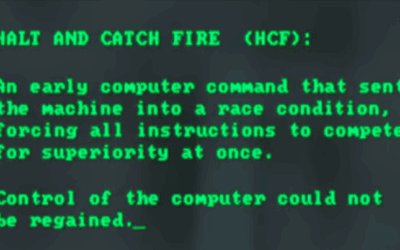




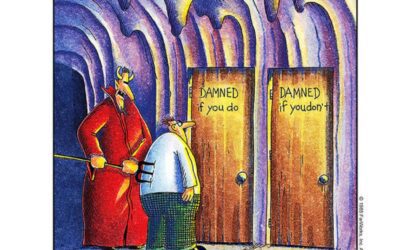

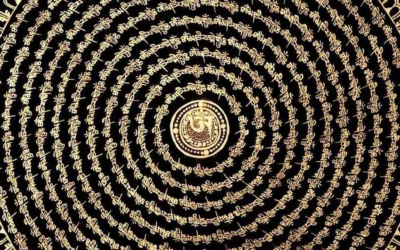

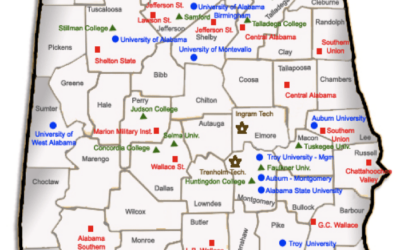
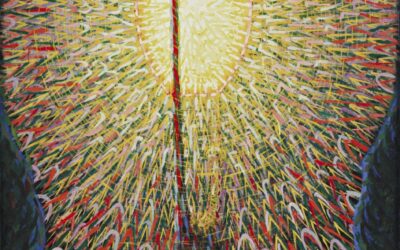













0 Comments